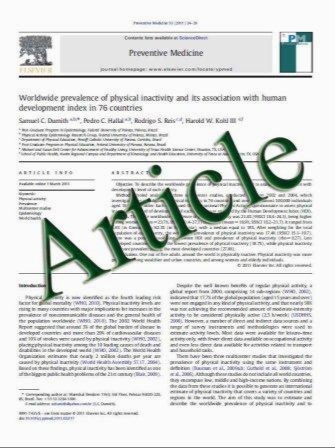Joint effect of peroxisome proliferator-activated receptor c genetic polymorphisms and estrogen-related risk factors on breast cancer risk: results from a case–control study in Taiwan
- نوع فایل : کتاب
- زبان : انگلیسی
- مؤلف : Mei-Hsuan Wu Chi-Hong Chu Yu-Ching Chou Wan-Yun Chou Tsan Yang Giu-Cheng Hsu Cheng-Ping Yu Jyh-Cherng Yu Chien-An Sun
- چاپ و سال / کشور: 2010
Description
Peroxisome proliferator-activated receptor c (PPARc) has been linked with possible antineoplastic effects in colorectal carcinogenesis. However, data for the possible link between PPARc and breast cancer risk are sparse. We assessed the association of three polymorphisms in PPARc (rs10865710 [C-681T], rs1805192 [Pro12Ala], and rs3856806 [C1431T]) with the risk of breast cancer in an ethnic Chinese female population in Taiwan. In addition, interactions with estrogen exposures were also explored. Genotypes for the PPARc polymorphisms were determined on 291 incident breast cancer cases and 589 matched controls by fluorogenic 50-nuclease assay. The at-risk haplotypes were defined according to the three polymorphisms in the following order: C-681T, Pro12Ala, and C1431T, which include CCT, GGT, and GGC. In addition, a critical period of estrogen exposure was estimated by the interval between age at menarche and age at first full-term pregnancy. Overall, there was no evidence of a significant impact of individual polymorphisms of PPARc on breast cancer risk. However, the haplotype analysis revealed that women harboring at-risk haplotypes showed a significant 67% increase in breast cancer risk [adjusted odds ratio (OR) 1.67; 95% confidence interval (CI) 1.11–2.52]. Furthermore, there was a significant joint effect of estrogen exposure-related factors and atrisk haplotypes of PPARc on breast cancer risk (adjusted OR 4.04; 95% CI 1.89–8.65), particularly in premenopausal women. The present study implicates a role for PPARc in breast cancer risk. Mechanistic studies to fully elucidate the mechanisms underlying PPARc’s effects should be pursued in future investigations.
Breast Cancer Res Treat (2011) 127:777–784 DOI 10.1007/s10549-010-1282-4 Received: 2 August 2010 / Accepted: 23 November 2010 / Published online: 8 December 2010 Springer Science+Business Media, LLC. 2010


